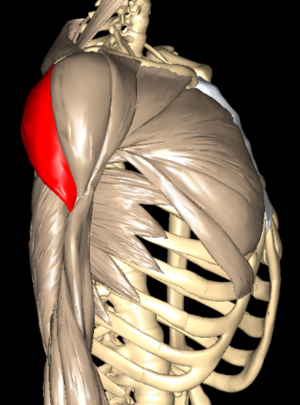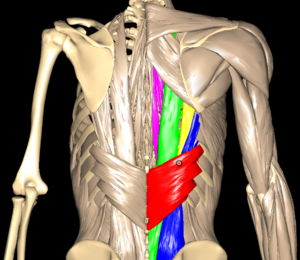Word Count: 936
Average Read Time: 3 minutes 24 seconds
Are you a busy person? You don’t have to answer that question. I know you’re a busy person. Even if you love being in the gym, you likely can’t spend as much time working out as you’d like. We need to make every minute we spend in the gym count.
For that reason, we’ll be taking a look at six compound exercise categories that, if used together, will train every muscle in the body. We will also cover some isolation exercises at the end as well so if you have a bit of extra time and want to work on a specific muscle group, I have you covered there too.
Movement Patterns
There is a LOT of confusion around which exercises target which muscles. The easiest way to clear up this confusion is to categorize exercises by movement patterns. If you understand which movement patterns build which muscle groups, it removes the guessing and constantly wondering if you’re doing the “best” exercises.
Once you understand the basic guidelines, selecting the specific exercises you want to include in your workout simply becomes a matter of personal preference, because you already know you’re including what you need to include in order to get the results you want. I’m going to list each of the six main movement patterns, the muscle groups they target, and some examples of exercises from each category. (I will include several dumbbell options for people still working out at home.)
Horizontal Push
Pushing horizontally (perpendicular to the body) works the pectoralis muscles (chest), triceps brachii (back of the arm), and anterior deltoid (front of the shoulder).
Examples of horizontal push exercises include:
Barbell Bench Press
Dumbbell Bench Press
Machine Chest Press
Cable Chest Press
Incline Bench Press
Incline Dumbbell Bench Press
Push Ups
Weighted Push-Up
Do you want to build muscle and shred fat?
Become an insider and learn my scientifically proven process for creating workout plans that will help you finally get the body you've always wanted.
Vertical Push
Pushing vertically (parallel to the body) primarily works the clavicular head of your pectoralis major (top of the chest), the anterior deltoid (front of the shoulder), and triceps brachii (back of the arm). The lateral deltoid (side of the shoulder) and posterior deltoid (back of the shoulder) are also worked, but to a lessor degree.
Examples of vertical push exercises include:
Dumbbell Overhead Press (seated or standing)
Barbell Overhead Press (seated or standing)
Machine Overhead Press
Handstand Push-Ups
Horizontal Pull
Pulling horizontally (perpendicular to the body) works the trapezius (middle of your back running vertically), latissimus dorsi (runs diagonally from the middle of your low back to your armpits), posterior deltoids (back of the shoulder), teres major (behind the armpit), biceps brachii (front of the arm), and various muscles of the forearm.
Examples of horizontal pull exercises include:
Barbell Row
Dumbbell Row (single arm or two arm)
Cable Row
Seal Row (Lay face down on a bench and pull a barbell from the ground and touch the bottom of the bench)
Leverage Row (seated or standing)
Vertical Pull
Pulling vertically (parallel with the body) works the trapezius (middle of your back running vertically), latissimus dorsi (runs diagonally from the middle of your low back to your armpits), posterior deltoids (back of the shoulder), teres major (behind the armpit), biceps brachii (front of the arm), and various muscles of the forearm.
Examples of vertical pull exercises include:
Chin-Ups
Pull-Ups
Lat Pull-Downs
Rope Climb
One thing you may have noticed is that I listed the exact same muscles for both horizontal and vertical pull. The difference is the muscle groups that are emphasized. Horizontal pulling puts more stress on the traps and rear delts, while vertical pulling puts more stress on the lats.
Hip Hinge
Hip hinging targets the gluteal muscles (butt), hamstrings (back of the upper leg), and the erector spinae, spinalis, and longissimus (runs vertically from your low back to your mid and upper back). One exception to this is the hip thrust which works mostly the glutes.
Examples of hip hinge exercises include:
Hip Thrust
Romanian Deadlift
Stiff Legged Deadlift
Conventional Deadlift
Sumo Deadlift
Good Morning
Cable pull-through
Squat
Squatting primarily targets the quadriceps (front of the upper leg), and the gluteus muscles (butt). Squatting also works the Calves (back of the lower leg), hamstrings (back of the upper leg), and spinal erectors, but to a much lessor degree.
Examples of squat exercises include:
Barbell Back Squat
Barbell Front Squat
Hack Squat
Goblet Squat
Leg Press
Lunge
Isolation Exercises
Isolation exercises, as the name suggests, are exercises that isolate a single muscle group. The most common isolation movements are as follows:
Chest: Chest Fly (Act as if you’re wrapping your arms around a tree.)
Biceps: Bicep Curls (bringing the hand toward the shoulder)
Triceps: Tricep Extensions (extending the elbow)
Quads: Leg Extensions (extending the knee)
Hamstrings: Hamstring Curls (bringing the foot toward the butt)
Calves: Calf Raises (coming up onto the toes)
Lateral Delts: Lateral Raises (bringing the arms up and out from the sides)
Rear Delts: Rear Delt Fly (bringing the arms out and back while leaning forward)
Exercise Selection Recommendation
Choose 1 - 2 compound exercises from each of the six movement patterns.
Choose 1 - 3 isolation exercises per muscle group.
Rotate compound exercises out after a minimum of 12 weeks.
Rotate isolation exercises out after a minimum of 2 weeks.
It may be beneficial to focus on the mind-muscle connection during simple exercises that train small muscle groups.
Thank you so much for reading! If you found this information helpful and want to help the Treadaway Training blogcast grow, simply share this post with a friend. If you like what I have to say, sign up below to become a Treadaway Training Insider or check out my YouTube channel. I will be back here Saturday with another body transformation topic. As always, God bless you AND your family and I'll see you Saturday.

































